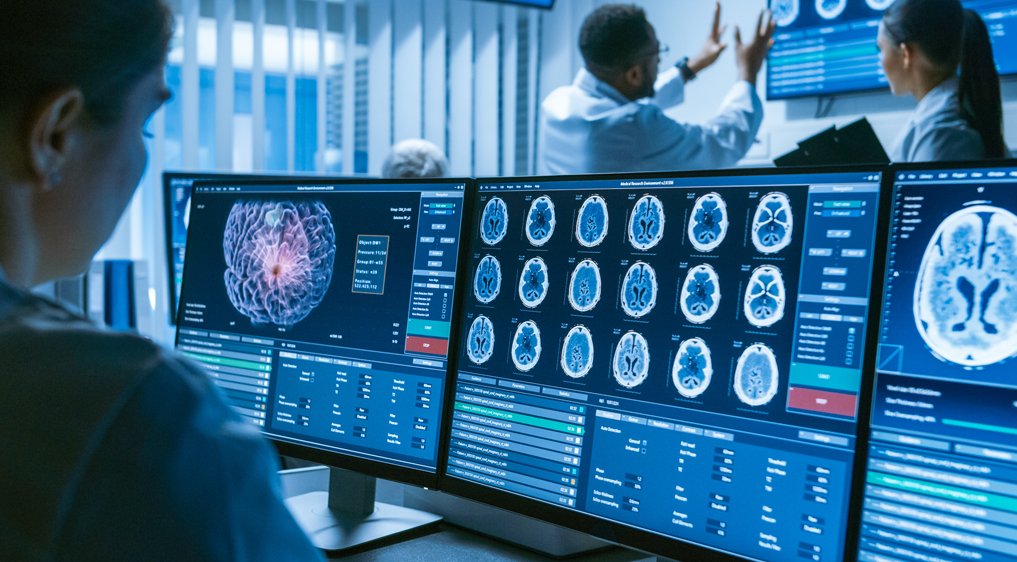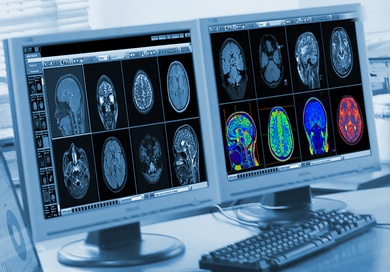Revolutionizing Neuroscience Pathology
AI-Driven Precision Diagnostics with Neural Assist
The report also highlighted that globally,
- Stroke had a 93.8 million of prevalence
- Over 11.9 million new strokes were reported.
- 7.3 million deaths were attributed to stroke.
- The lifetime risk of stroke has increased by 50% over the last 17 years.
- One in four people is expected to experience a stroke in their lifetime.
The researchers also observed that between 1990 and 2019, there was a
- 70% rise in stroke incidence
- 43% increase in stroke-related deaths
- 102% surge in prevalence
- 143% escalation in Disability Adjusted Life Years (DALYs)
Request for Neural Assist Demo
Neural Assist: The Future of Stroke Diagnosis
Embracing AI-driven tools in stroke diagnosis represents a significant advancement in healthcare. These technologies not only support medical professionals in delivering timely and precise care but also contribute to addressing the global stroke burden by facilitating early intervention. To explore how AI can enhance your diagnostic capabilities, consider scheduling a demonstration of our cutting-edge AI tool designed for stroke detection on non-contrast CT scans. Witness firsthand how this innovation can integrate seamlessly into your practice, empowering you to make informed decisions swiftly and confidently.

Types of Strokes and Global Burden
According to the findings from the Global Burden of Disease Study 2021, among the major types of stroke incidences globally,
Ischemic Stroke
Accounted for 65.3% (7.8 million) of all new cases.
Intracerebral Hemorrhage (ICH)
Accounted for 28.8% (3.41 million) of all new cases.
Subarachnoid Hemorrhage (SAH)
Accounted for 9.7% (0.7 million) of all new cases.
Disparities in stroke burden and risk factors were observed across different regions, countries, and socioeconomic levels, with a stagnation in the reduction of incidence from 2015 onwards. Some regions, such as Southeast Asia, East Asia, and Oceania, as well as countries with lower Socio-Demographic Index (SDI), and individuals younger than 70 years, even experienced increases in stroke incidence, death, prevalence, and DALY rates.

The Role of AI in Early Stroke Detection
Quick and accurate diagnosis is critical in the moments immediately following a stroke. AI algorithms can rapidly detect subtle signs of a stroke which may be hard to spot in the early stages. By assisting radiologists in identifying these indicators promptly, AI enhances diagnostic accuracy and speeds up treatment decisions, leading to better outcomes for patients.
Given the substantial burden of each stroke type, healthcare organisations are beginning to focus on expanding rapid diagnostic capabilities, especially in emergency settings, and investing in AI-enabled tools for early detection. Improved accessibility to preventive care and rehabilitation services is the way forward to reduce the long-term impact of strokes globally.
Where rapid and accurate diagnosis is crucial for effective treatment, radiology departments face challenges such as time sensitivity, resource limitations, and diagnostic accuracy. Artificial intelligence (AI) offers transformative potential in stroke management by providing rapid image analysis, decision support, workflow optimization, and resource efficiency.
If your priorities include rapid Neuropathology diagnostics in emergency settings and you are considering adopt AI-driven tools for early detection, Neural Assist is your answer. Book a Demo call with us by submitting this enquiry form.
Neural Assist: Revolutionary AI tool for Neuroscience Pathology
Neural Assist, developed by Telerad Tech, is an AI-powered solution designed to enhance stroke diagnosis and management. This deep-learning-based software has been trained on thousands of clinically curated scan images to instantly and accurately identify and measure brain bleeding. In the emergency setting of stroke and head injury, where “time is brain,” Neural Assist helps ensure that critical conditions are identified within the “golden hour,” potentially improving patient outcomes and saving lives.
Harnessing AI for Critical Diagnostics
Neural Assist is a deep-learning-based software, a product of five years of rigorous development. Proudly made in India, the software has been trained on thousands of clinically curated scan images to detect brain-related abnormalities precisely and timely. In high-stakes emergencies such as strokes and head injuries, where “Time is brain,” Neural Assist proves invaluable by helping clinicians detect critical conditions within the crucial “golden hour,” potentially saving millions of neurons with each minute gained.
Neural Assist processes non-contrast adult head CT scans in DICOM format, analyzing the images to detect:
- Intracranial Hemorrhage
- Midline Shift
- Cranial Fractures
- Dense MCA Sign (indicative of stroke)
Once the analysis is complete, the software flags critical scans for urgent review and generates a structured report in DICOM, PDF, or DOC formats to assist radiologists in the clinical review process.
How is Telerad Tech’s Neural Assist your best choice?
Multi-Mode Deployment
Neural Assist offers unparalleled deployment flexibility, supporting
- On-Premises Installations
- Cloud-Based Operations
- Hybrid Configurations
This adaptability ensures the software can be integrated into healthcare environments of all sizes, from small clinics to large hospitals.
Seamless Integration with PACS and Marketplaces
Neural Assist integrates effortlessly with third-party Picture Archiving and Communication Systems (PACS) and Radiology Information Systems (RIS) using DICOM and HL7 protocols. It supports robust workflows for image distribution, data archival, and reporting across departments and borders. Moreover, it extends its accessibility by integrating with leading healthcare marketplaces, providing institutions easy access to cutting-edge radiology tools.
Precision Diagnosis
Neural Assist outperforms conventional diagnostic tools with
- 90% sensitivity and
- 91% specificity for hemorrhage detection
- It can identify 5 distinct classes of Hemorrhage with 85% accuracy
Classify Midline Shifts with 93% sensitivity and 87% specificity
The software also detects Cranial Fractures with 85% sensitivity and can pinpoint the exact location with 89% accuracy.
This level of precision allows radiologists to make better-informed decisions, guiding treatment and estimating patient prognosis with greater confidence.
HIPAA Compliance
Patient data protection is paramount. Neural Assist strictly adheres to HIPAA guidelines, ensuring that sensitive medical information is handled with the highest standards of confidentiality and security.
Key Features of Neural Assist
Analysis Capability
Analyzes non-contrast adult head CT scans to detect intracranial hemorrhages, midline shifts, cranial fractures, and dense MCA signs.
Integration with Existing Systems
Seamlessly integrates with RIS-PACS facilitating smooth data exchange and workflow continuity.
Deployment Flexibility
Can be deployed on-premises, in the cloud, or in hybrid modes, catering to the specific needs of various healthcare settings.
Regulatory Compliance
Adheres to data protection standards, including HIPAA compliance, ensuring patient information is handled with the utmost confidentiality.
With Neural Assist Transform Diagnostics, Empower Healthcare
By incorporating Neural Assist into radiological workflows, healthcare providers can overcome existing challenges in stroke management, leading to improved diagnostic accuracy, reduced time to treatment, and better patient outcomes. Experience the future of radiology with Neural Assist.
